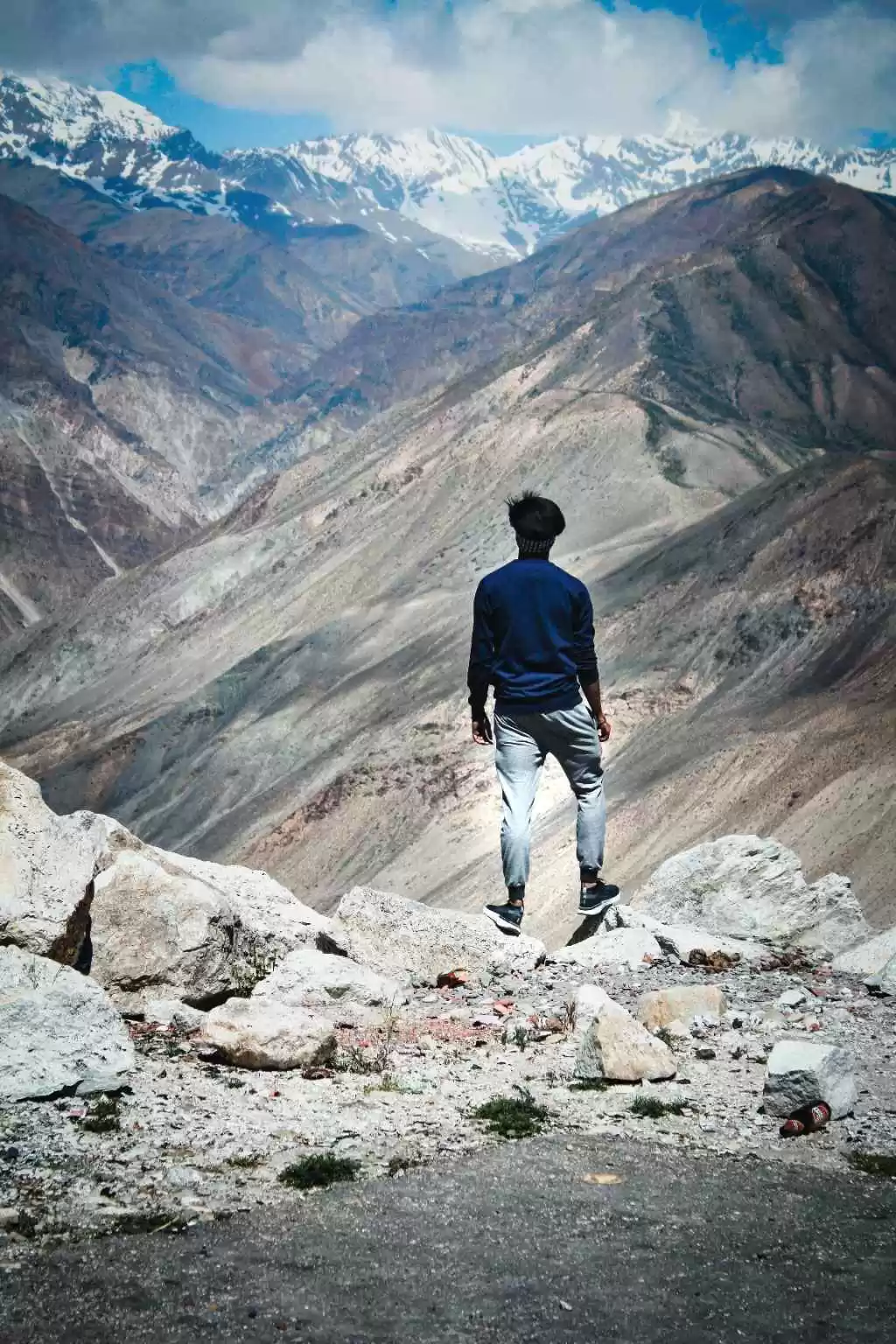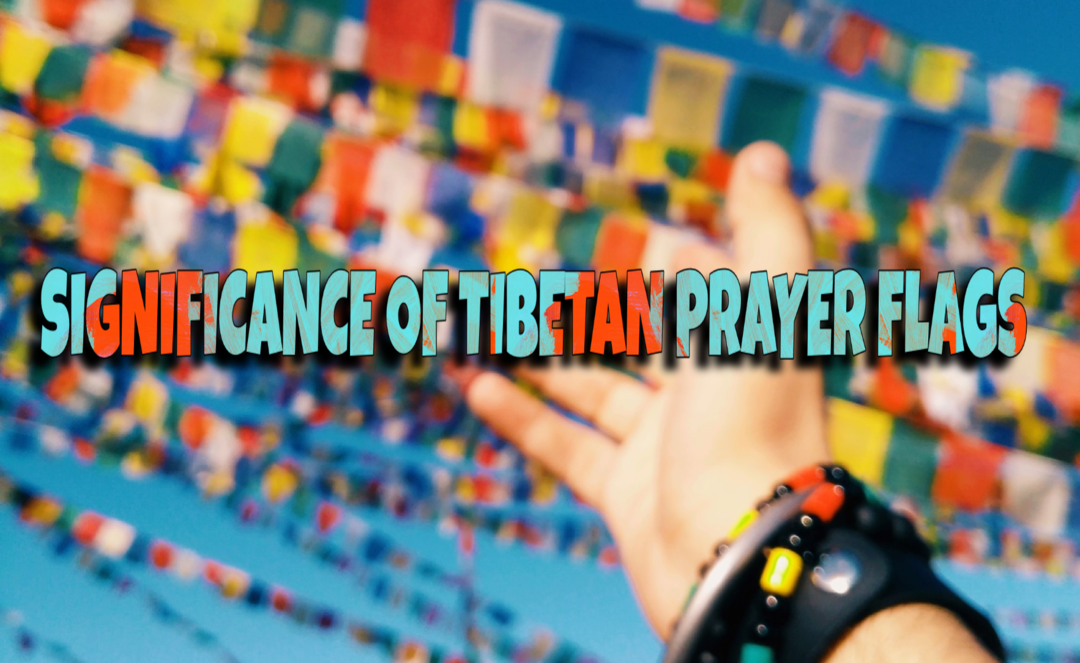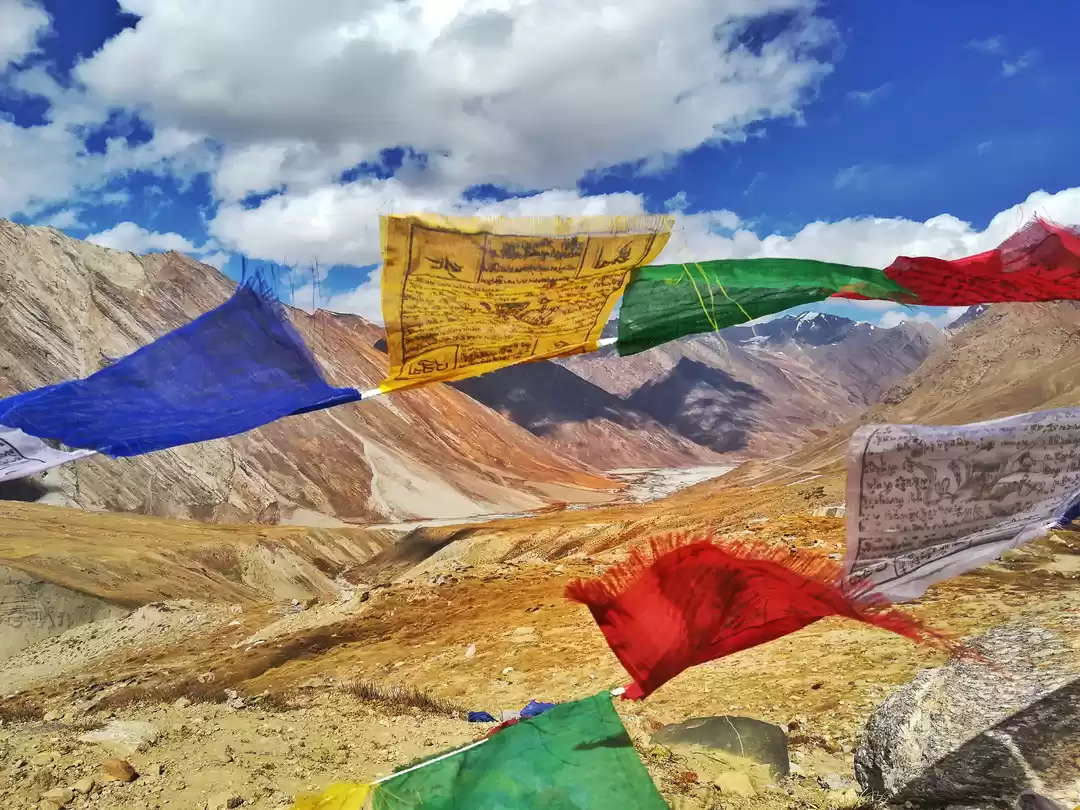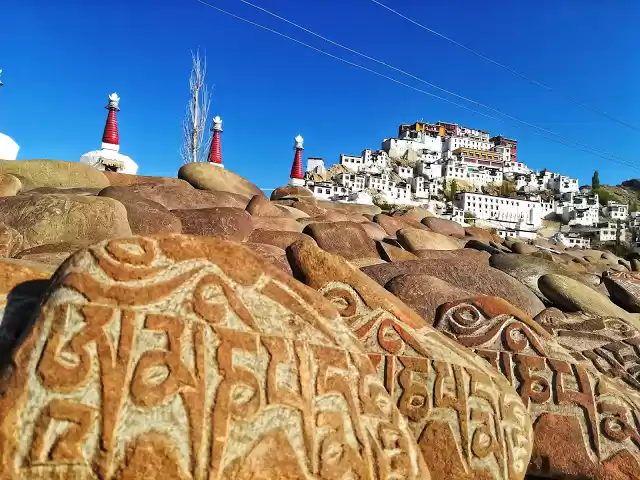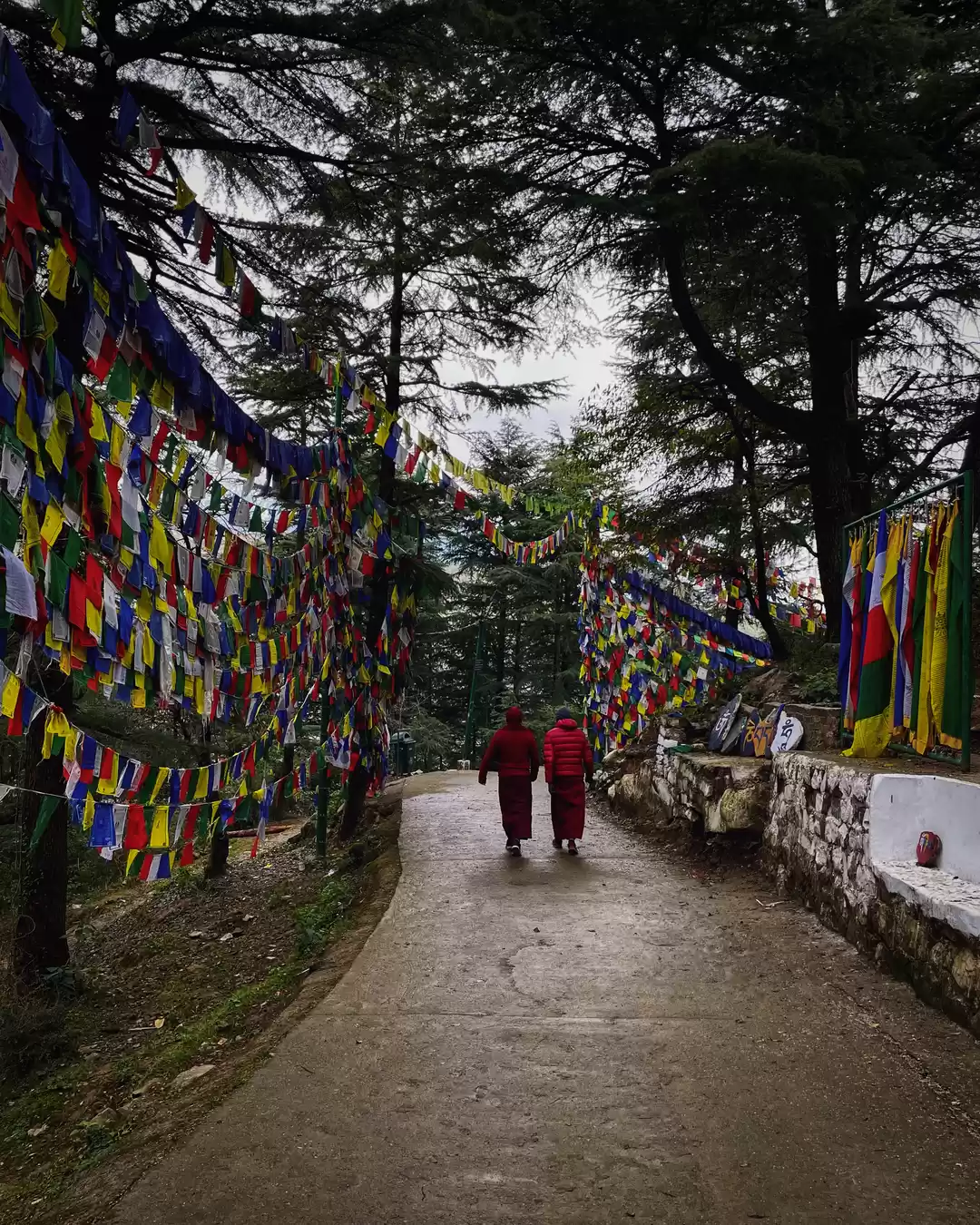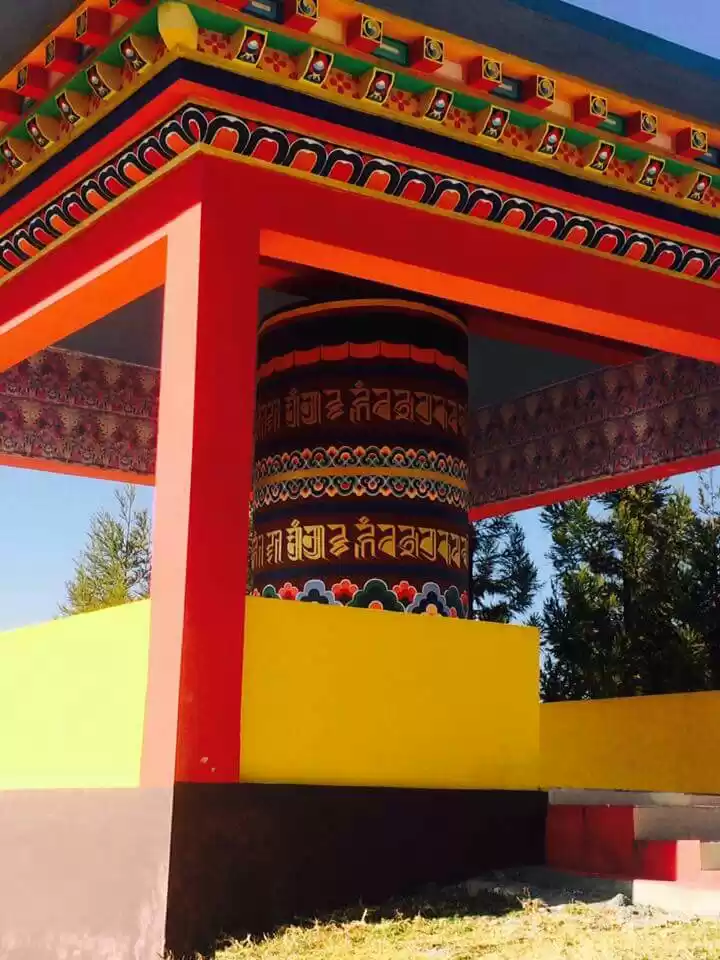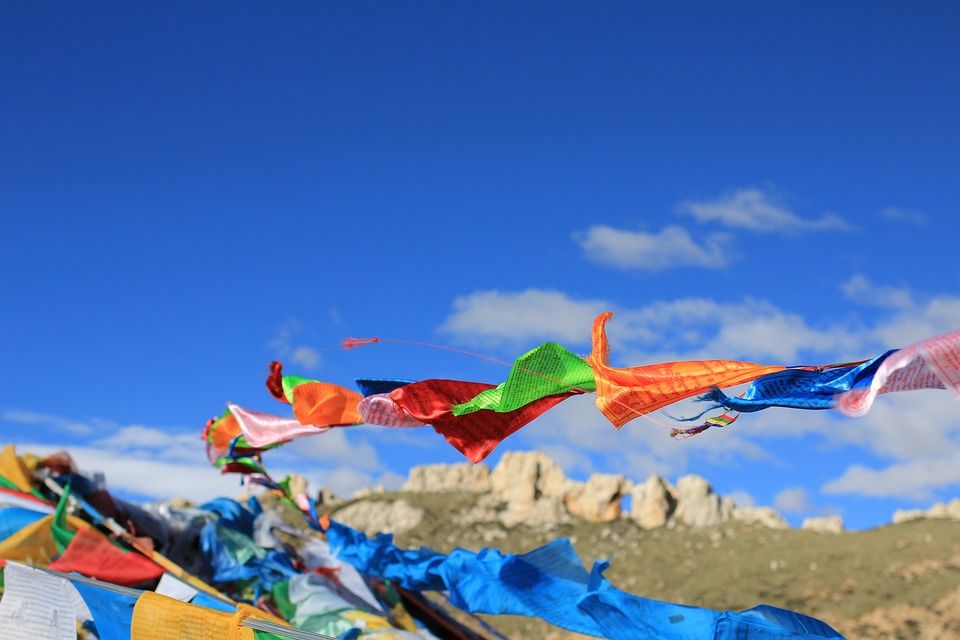
Tibetan Flags or the Prayer flags are seen almost everywhere in Buddhist regions. People usually buy or ask someone who is visiting Leh-Ladakh to bring these flags for them. However, only some of us are aware of their significance and that these are not just some fancy items hung at your door or at the back of your car.
What are the Buddhist prayer flags? What those colors signify and why it asked always to hung them outside? Check this post to know answers to all of these questions.
To know complete road trip itinerary to Spiti click here
1. What do 5 colors of the Prayer flag signify?
Prayer flags come in the set of five and are always ordered right to left. The five colors are associated with 5 elements. Each element has a different color associated with it.
Blue signify space and sky
White symbolize air and wind
Red for fire
Green symbolize water and
Yellow symbolize earth.
It is believed that with the balance of these 5 elements, peace and harmony is maintained.
2. What is the Meaning of Om Mani Padme Hum?
Om Mani Padme Hum is the condensed form of all Buddhist teachings. It can be seen written on the prayer flags as well.
Om/Aum - It is an syllable mostly used in various Indian religions.
Mani - Jewel or bead
Padme- lotus
Hum -Spirit of enlightenment.
The middle part mani Padme is often interpreted as the jewel in the lotus. Lotus symbol is widely present in Indian religions and is a symbol of purity. Due to its ability to grow and sustain despite surrounding with mud.
And up to some extent, this is what we learn from the teachings of Buddha, to remain unaffected inside, by the outside circumstances.
3. Why are Tibetian flags supposed to be hung outside?
A) Wind can carry prayer to mankind:
Prayer flags are believed to spread compassion, peace, and wisdom in the mankind. It is always seen that these flags are hung on high and open areas. The reason being, the wind carries the prayer to even the farthest of the areas and by the movement of wind, the air gets purified with mantras.
B) Symbols on flag are sacred:
According to Traditional belief, symbols on the flag are sacred and should be treated with respect. The flags should not be placed on the ground or used on any clothing.
4. Two types of Prayer flags- Lung ta And Darchog styles
A) Lung ta or Horizontal Flags
There are two types of flags, Horizontal ones called Lung ta. Lung ta are rectangular shapes and are connected along their top edges with a rope or thread. These are mostly hung on high areas as mountains and between two objects such as rocks.
B) Darchog /Vertical Flags
Darchog is a single vertical flag attached to poles or rooftops. You can read detailed information here.
5. Color fading is considered auspicious
Fading is a sign of prayers being carried by the breeze from a longer amount of time.
**Don't believe what they say, go and see it **
Follow me on Facebook, Instagram, youtube and on travelchecklistt.com




















